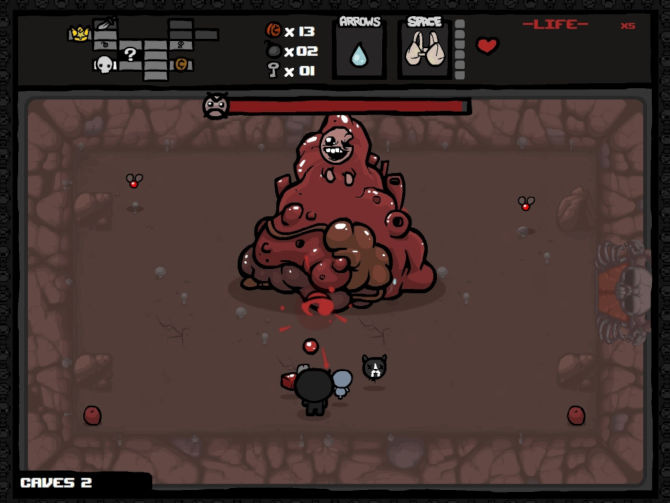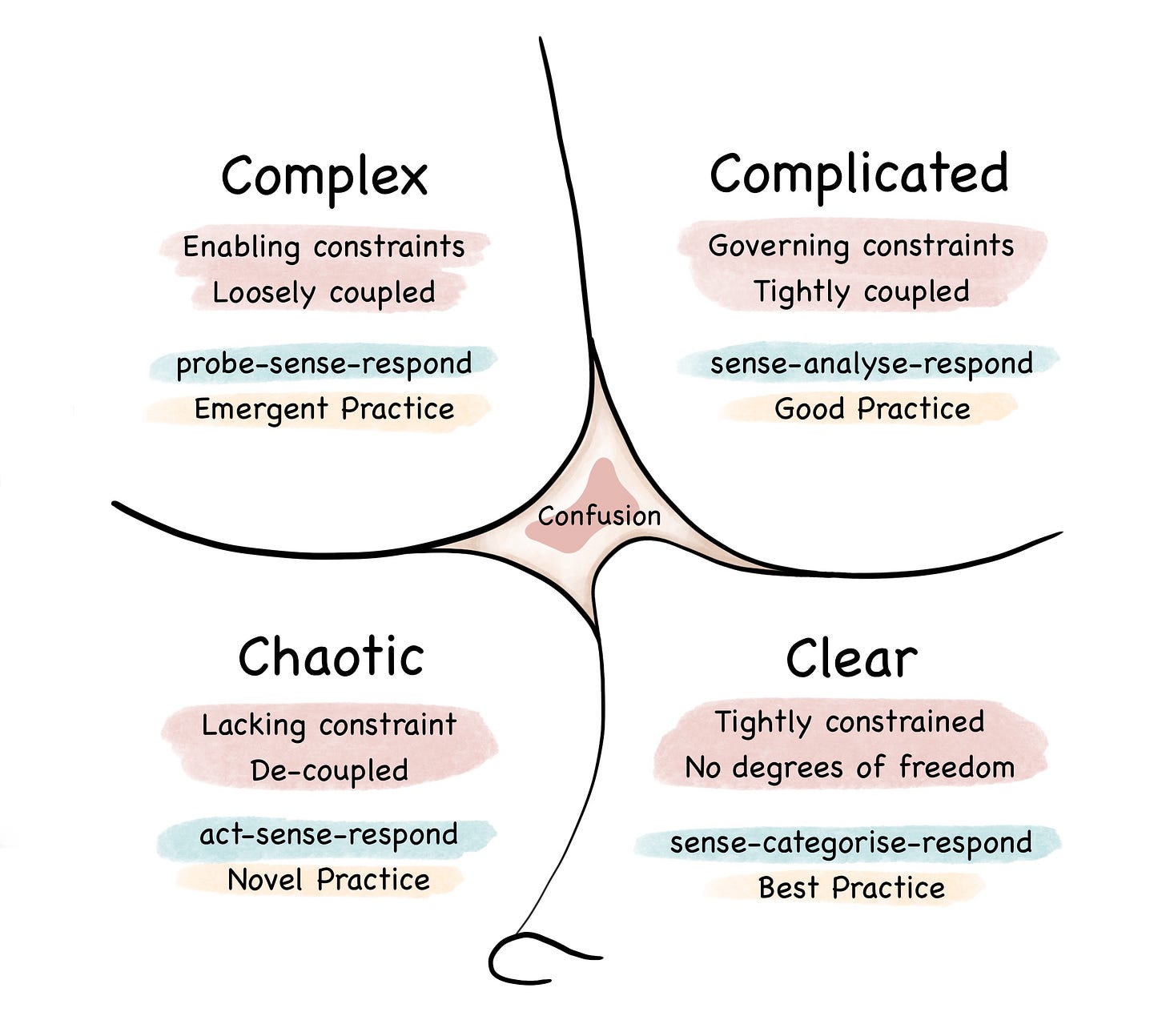The Cynefin framework: how to classify and solve different types of problems
What is the Cynefin framework and how you can use it to solve problems that seem unsolvable
Not all problems are equal
When approaching a problem, I usually have that “gut feeling” telling me it’s easy or hard.
Even before analyzing the problem, you can instinctively feel if you already know what to do or need more information. This is an instinct that grows with experience and becomes more precise. Both have more general experience as professionals and more experience in a specific domain, making it easier to classify problems between “easy” and “hard.”
Having more experience means having encountered more problems, so you might classify more problems as “easy” than you did in the past.
But that’s not enough.
Relying on instinct is not ideal. It helps, but it’s unreliable because you cannot teach it, and it is inconsistent. You might find a problem similar to one you solved in the past and not recognize the same patterns. As engineers and scientists, we want a consistent pattern to follow, and we can apply it to classify and solve problems.
The Cynefin framework is the tool for the case.
The Cynefin framework
The Cynefin framework was created by Dave Snowden in 1999.
It can help when you need to decide how to approach a problem by guiding you through the classification of such problem into five categories:
Clear
Complicated
Complex
Chaotic
Confusion/Disorder
Clear
Clear means easy; it means you know what to do.
It might be because the problem is documented or because it is a problem you have already encountered. What matters is that you know the solution in advance. The approach to this type of problem should be:
categorize the problem in the right group of problems of the same type you already know
respond: decide the steps and solve the problem
Clear does not mean fast to solve!
A Clear problem is a problem you know how to solve, but the steps might be a lot. Make sure everyone understands this clearly. I’ve often seen the misunderstanding of “We know what to do” and “Great, so it’s ready tomorrow”.
Clarify this difference with everyone.
Complicated
Complicated problems need more investigation to clarify the correct path.
There might be multiple solutions to the problem. In this stage, it is relevant to identify what’s the most effective for the situation. That’s why domain experts need to be involved. An expert’s knowledge might be crucial to clarify that one solution is a better fit than the other.
The steps are the following:
analyze: use the expert’s knowledge to have a better understanding of the problem
respond: decide the steps to solve the problem
Complex
Complex problems are unpredictable in advance.
It doesn’t matter how much research you do; you can’t plan a solution without experiments. No one can predict the solution to this problem, no matter how experienced or good their knowledge of the domain is. The only viable approach in this category is empirical. In my experience, this category is the most problematic because it is often confused with the Complicated one. When this happens, the result is endless research and frustration.
Let me clarify the difference between Complex and Complicated with an example I borrowed from my friend and colleague, Maksim Sinik.
Complex problems are a rogue-lite game
In a rogue-lite game, your goal is to go as far as you can in a single run, eventually beating the game.
The difference with other games is that you can keep some of your gathered resources even when your character dies. Every run helps the next ones. In an RPG (role-playing game), if your character dies, you lose all the resources, and you might need to restart the game with less experience and less equipment. RPGs are played to minimize deaths. You analyze the situation carefully, gather as much information as possible, and then try to fight the enemy. In a rogue-lite game, every run is an experiment; there might also be runs where your goal is not to finish the level but to collect resources and die.
Complex problems are rogue-lite games.
You need to start the run to gather data. Don’t be frustrated since you are expected to fail in one or more experiments. The goal is not to solve the problem but to understand it.
The steps are the following:
experiment: gather information through experiments
respond: decide what to do next, do another experiment, or plan the steps to solve the problem
Chaotic
Chaotic problems are emergencies.
Here, you don’t have time to analyze or do experiments. If you don’t act immediately, the situation can quickly degenerate. These are situations where you have data loss or, in general, major system disruptions.
The steps are the following:
act: stop the bleeding, do whatever is necessary to stabilize the situation
respond: decide what to do
Chaotic problems demand “situation rooms”. There is no time for explanation. Make sure you have the right people; if you realize someone else is needed, call them immediately into the room. I have often experienced people trying to explain what’s happening behind the scenes to share knowledge. That’s fantastic… for later.
Stabilize the situation, then share the knowledge.
Situation rooms are places where trust plays a critical role, if you want to know more about trust you can read this post I did on the topic.
How to build trust as a leader and why it is crucial to make your team performant
To write this post, I created a survey with the following questions: I grew up thinking vulnerability is... Today, for me, vulnerability is... I grew up thinking trust is... Today for me, trust is... You’ll find the results of this survey while reading.
Confusion
This is the stage where you don’t know which of the other four domains you are in.
The best approach here is to decompose the problem and put each component into one of the other domains. Don’t focus on analyzing the problem as a whole; decompose it into smaller pieces. This is not the place to analyze since, after decomposing it, you might realize there are Complex components, so your analysis might lead to nothing.
In this domain, the goal is to put each problem component into one of the other four domains and follow its steps.
Navigating the domains
Image by Tom@thomasbcox.com - Wikipedia
The image above represents the Cynefin domains diagram.
As you can see, the Confusion domain is in the middle since it is not an actual domain but might belong to any of the other four. The diagram can be navigated clockwise. Following the steps in a Complicated problem can make it Clear. Experimentation in a Complex problem can clarify it and move it to be Complicated.
One important thing to notice is that a Clear problem can lead to Chaotic when knowledge is not applied correctly.





